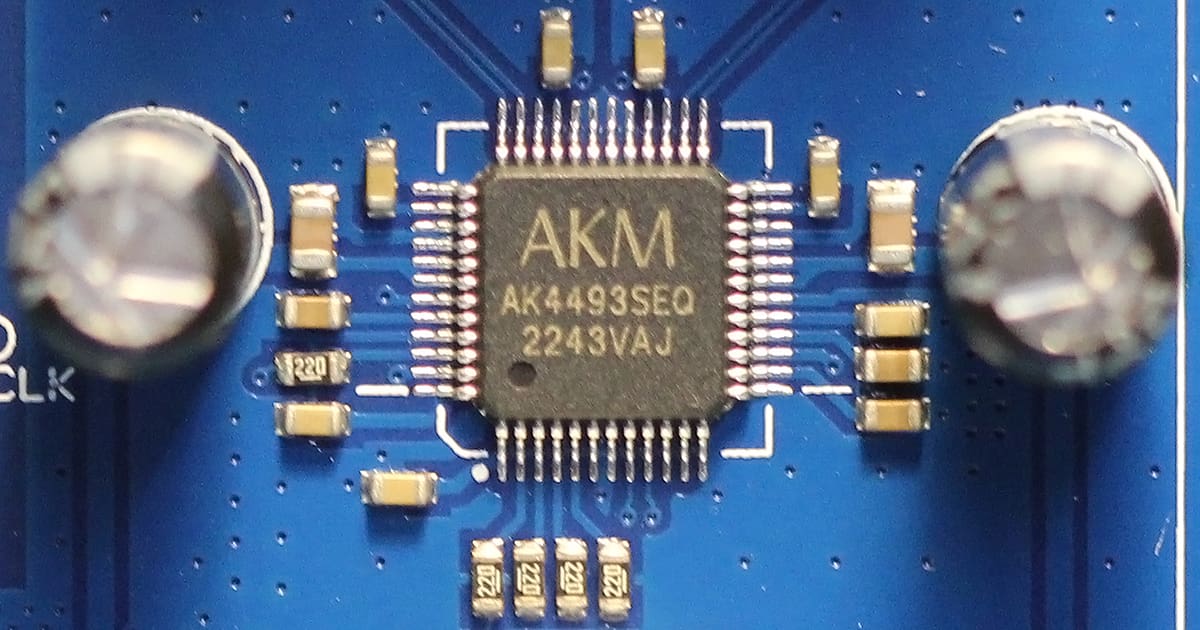A plethora of source units and digital signal processors are available for car audio systems, each with its own unique features and performance capabilities. Our lab team, while working on a client project, came across two digital-to-analog converters that stood out because of their dramatically different performance. The process of converting a digital signal to an analog voltage may seem straightforward, but the stark and audible contrast in clarity and performance between these two DACs was a revelation. Let’s delve into the numbers and see what they reveal.
The Test Subjects
The test data we present below is from two different desktop DACs, a crucial component in many consumers’ media systems. These systems, often used with a headphone amp and a laptop or personal computer, rely on the DACs to convert digital signals to analog waveforms. The DACs are fed by the optical TOSLINK SP/DIF output of the audio source, and both converters include a coaxial digital SP/DIF input.
For the testing, the output of the DAC was connected to our QuantAsylum QA403 audio analyzer, a tool that provides us with precise measurements of their performance. Both units are powered by the USB port in a large desktop computer. While a better power supply might further reduce noise, our data suggests that the improvement wouldn’t be significant enough to warrant the change.
While the DACs we tested aren’t typically used in vehicles, this comparison serves a crucial purpose. It demonstrates how the DAC portion of an inexpensive or poorly designed digital signal processor might compare to that of a truly high-end unit. This insight can be invaluable for car audio system designers and people interested in digital-to-analog conversion technology.
It’s important to note that while the DACs are a crucial part of the audio system, other components play a larger role in the perceived quality of your audio. Speakers and subwoofers, for instance, are significant in determining sound quality. However, the importance of proper system design and calibration cannot be overstated. These factors are fundamental to creating a truly lifelike listening experience. Only when these criteria are optimized does the quality of the electronic components, including the DACs, come into play. With that said, clarity is directly proportional to the distortion added to an audio signal. You can’t remove distortion, so the system’s performance is limited by the weakest link in the audio chain.
Total Harmonic Distortion and Noise
The first test we will perform to evaluate these digital-to-analog converters involves playing and analyzing a 1-kHz test tone. This test shows how much unwanted harmonic content and noise the converters add. We can look at the amplitude of the second and third, and, if high enough, additional harmonics to quantify a percentage of harmonic distortion level. The graphs also clearly show the noise floor of the two devices.
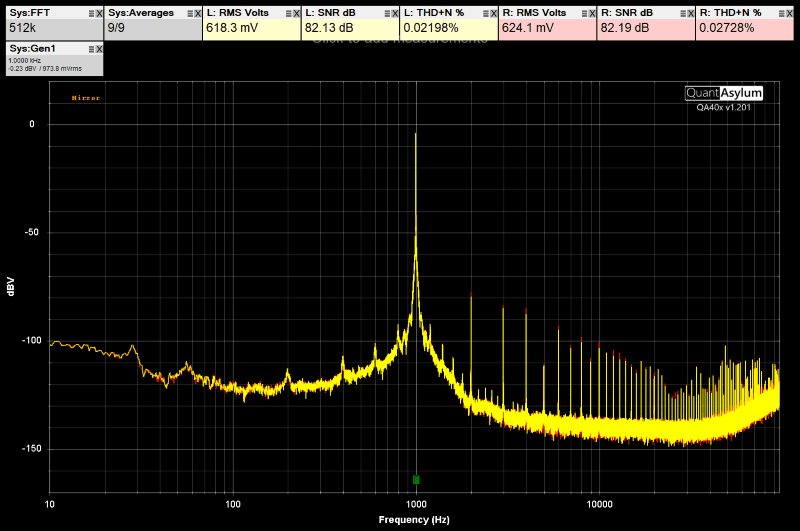
Analyzing the above data shows prominent second, third, fourth, sixth and ninth harmonics from both channels, with the right channel being a bit worse than the left. This content works out to 0.02198% THD+N for the left channel and 0.02728% THD+N for the right. The signal-to-noise ratios are 82.13 dB for the left and 82.19 dB for the right. This isn’t a bad performance, but it’s definitely not “high-end” or “audiophile” in any way.
The low-frequency noise floor is relatively high compared with other frequency ranges. There is also a lot of side-band information around the base of the 1-kHz test tone. This would be the equivalent of how an entry-level multimedia receiver (< $275 US) might behave.
Another observation is that the output levels are very close at 618.3 and 624.1 millivolts. That’s less than a hundredth of a decibel of difference.
Now, let’s take a look at the high-quality DAC.
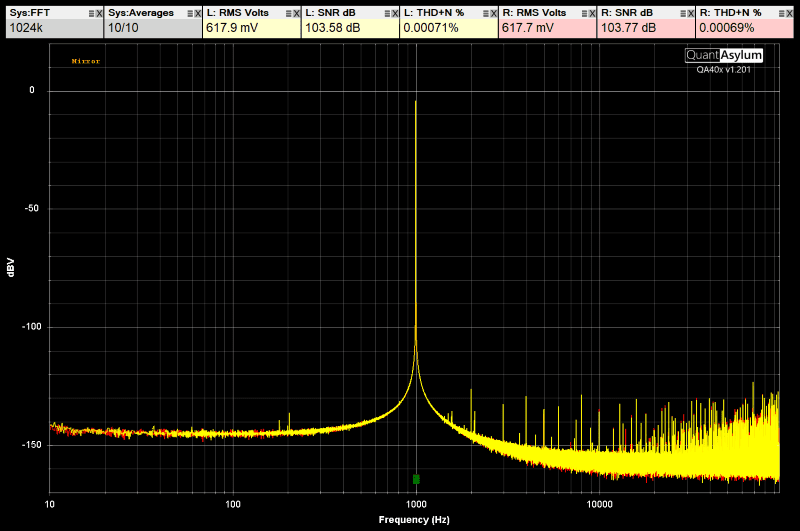
This is easily the lowest I have ever measured with my QA403 in terms of distortion. The left channel came in at 0.00071% THD+N, and the right channel is even better at 0.00069%. Channel imbalance is astonishing at 617.9 millivolts on the left to 617.7 millivolts on the right, which is only 0.000025 dB. The noise floor is well under -140 dBV below 1 kHz and under -130 dB above 1 kHz. Signal-to-noise ratio measurements are stunning at 103.58 dB for the left and 103.77 dB for the right. To put these numbers into perspective, the second-order harmonic is about 130 dB less than the fundamental signal. That is a stunning performance, given that the inexpensive DAC had right-channel harmonics at about -80 dB.
Linearity Testing
We haven’t investigated linearity measurements in the past. Quite simply, linearity refers to the ability of a source unit or processor to output or process all signal levels evenly. If we request an output of -10 dBV, then we should get -10 dB FS on the output. This test can show design issues at higher levels and noise issues at lower levels.
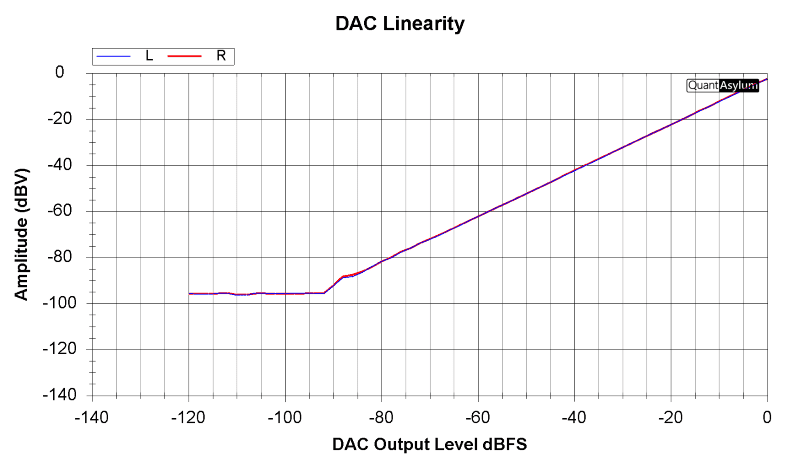
At first glance, the inexpensive DAC seems to perform well. The gain remains reasonably consistent at all amplitudes. There is a small ripple in the waveforms between -15 and -20 dB and again around -75 dB. Below -82 dB, noise and distortion become an issue. Audio information below -85 dB starts getting washed out by noise, and the device is fully non-linear at -92 dB.
Let’s analyze the premium DAC for linearity.
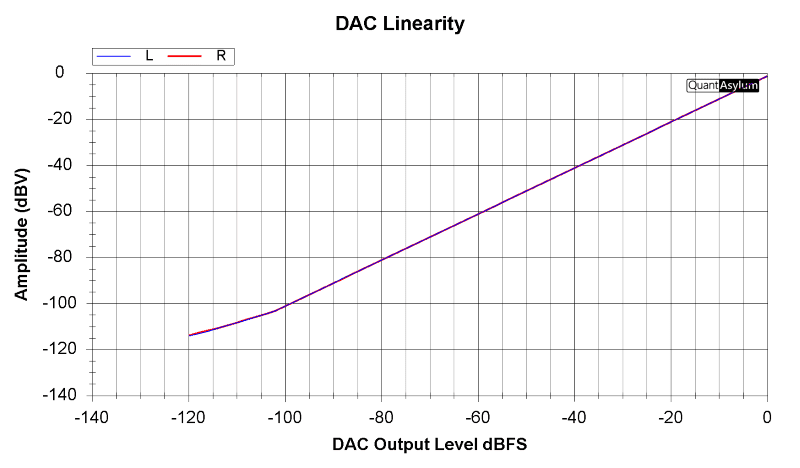
As you can see, this DAC functions flawlessly down to about -102 dB and would still produce information to the -120 dB limits. Since nobody will hear nonlinearities below -110 dB, the performance is exemplary.
Channel Separation
I am limited in the information I can send the devices, but an essential test for spatial accuracy in an audio system is to test channel separation. I’ll play the same 1-kHz test tones for these tests but mute one channel and then the other to see what leakage occurs.
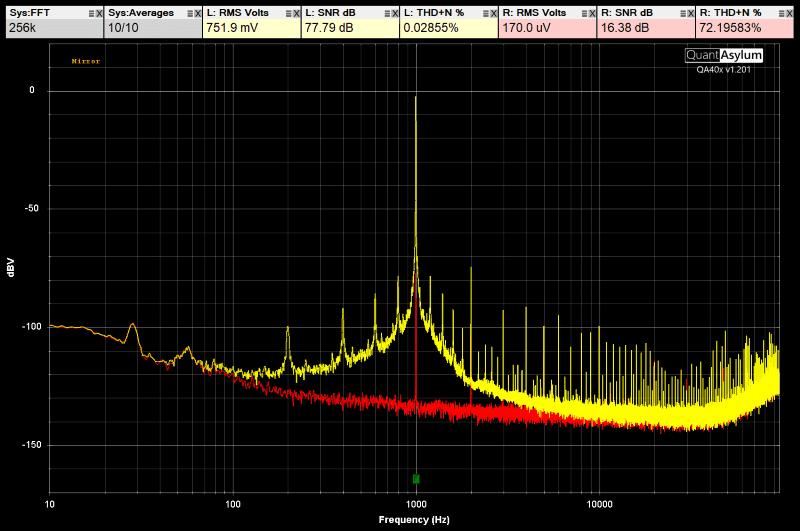
With no signal sent to the right channel, audio and harmonics from the left channel leak over at a level of about -75 dB. This isn’t horrible, but it’s not stellar, either.
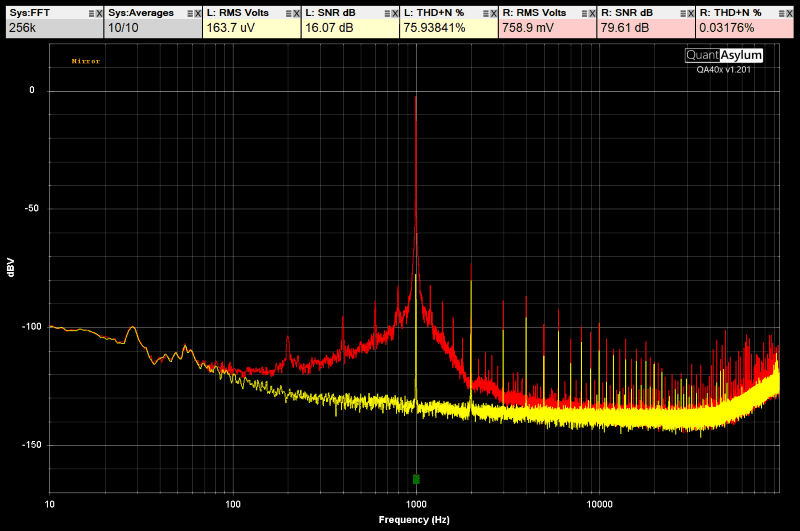
Going the other way, we muted the input to the left channel and analyzed both outputs. The leakage was similar. In this direction, it’s easy to see the harmonic information (in yellow) overlaid on top of the red right channel information.
Moving to the premium DAC, we repeated both tests, first by muting the left input and then the right.
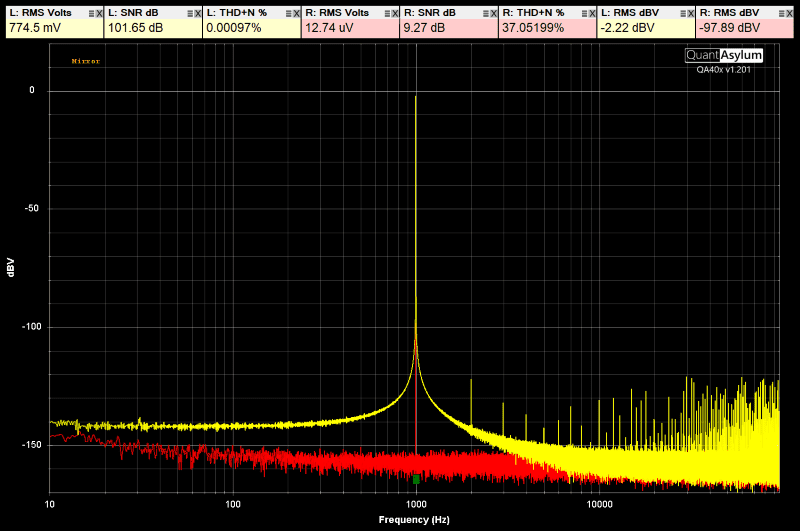
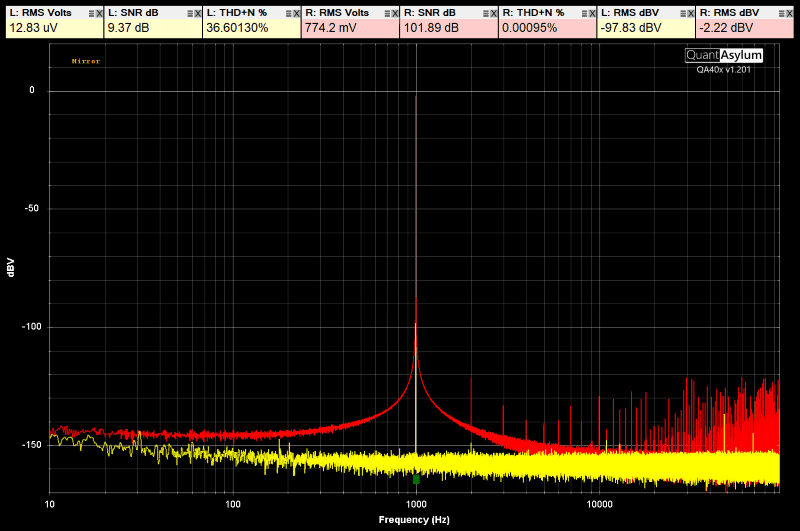
Unsurprisingly, the performance of the premium, albeit still affordable, DAC is stunning. There leakage is about -96 dB from right to left and left to right. In short, there would be no audible output from the opposite channel, even at elevated volume levels. This is how audio equipment is supposed to function.
What Does This DAC Comparison Tell Us?
I have heard it said many times that there is no significant difference in the sonic performance of devices like digital signal processors. While the Cirrus Logic, Analog Devices or Asahi Kasei Microdevices DSP processors might all perform the same mathematically, the quality and accuracy of the conversion back to digital can vary significantly. If you think an entry-level internet-brand DSP will sound as good as something from Audison or ARC Audio, you are mistaken. This article presents indisputable evidence that not all digital-to-analog conversions are executed with the same accuracy. If you’re shopping for a high-quality digital signal processor, drop by a local specialty mobile enhancement retailer and talk with them about your expectations for the product. They can help you find something that will sound amazing and provide the features your audio system requires. Most importantly, they can integrate the processor into your car’s audio system and calibrate it properly.
